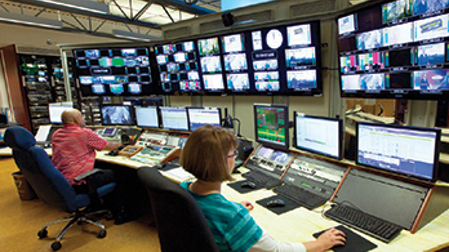Between Rising Cost & Low Productivity Lies Innovation
NEW YORK—You could not turn on the business news channels in the past month without hearing that wages have finally started to rise. In the next breath, you’ll learn about the growing divergence between employee earnings and business profit in the U.S. and across the world. Everyone has their own theory about this “productivity gap,” which is attributed to many things including retiring baby boomers, lack of capital investment, or maybe just too many people off enjoying their summer vacations.

In the media space the gap between what it costs to make a program and the number of viewers for that program, and thus its monetization potential, has been growing for a very long time. As an example; as far back as 2007, around the days of the writer’s guild strike, we saw NBC, under its GE management, try to reduce the cost of the 8 P.M. primetime lineup by embracing non-scripted. Company management has been feeling this pinch for quite awhile.
HEAD SCRATCHER
I am lucky that I get the opportunity to visit many TV stations and cable production facilities, but cannot help but notice that layoffs in these businesses are continuing as ratings continually inch lower. Often these staff reductions are not accompanied by process improvement or capital investment, and I am left scratching my head. In other words, media companies continue to squeeze the stone harder in hopes of getting more water from it. As employees struggle to keep up as they absorb the workload of their departed brethren, you have to wonder where we are headed.
I am not an economist, but I believe that there are additional pressures affecting media companies that serve to amplify the general lack of productivity seen in the economy at-large. The rise of smartphones and social media means more than employees having interesting, non-work things to do during their idle moments. These additional platforms are an added challenge for media companies who must deliver content to these new outlets. That’s additional work just to hang onto existing viewers without adding to revenue or creating new lines of growth. Examine Disney’s recent whopper of an investment in MLBAM and you can see the pressure acting on organizations to find efficient and profitable ways to embrace over the top delivery. Draw this trend line out and you can see that as an industry our productivity, and therefore our potential for profit growth, is clearly in trouble.
What’s a media business to do? Invest more in innovation, of course!
CONSOLIDATE, INNOVATE
The professional video industry's #1 source for news, trends and product and tech information. Sign up below.
We’ve already seen facilities transition to nonlinear editing, add robotics to their studios and switcher automation to their control rooms. We’ve seen consolidated master controls and remote transmitter monitoring. These innovations, when properly staffed, create productivity improvements and enhance bottom line profits. Once this playbook is complete, however, where does a media business turn for next year’s productivity growth?
Here are some ideas:
·Study your operation: Manufacturing firms have been studying their own operations, investing in lean manufacturing and just-in-time-delivery for years, yet many broadcasters fear those tools as anathema to the creative process. They largely are still staffing productions the way they did 20 years ago. Many companies are afraid to take an honest look at where the waste is (hint, it’s not only in the operations teams). Process analysis can often reveal “hidden factories” where work is being done, but not falling effectively to the bottom line.
·Enhance CMS: Content management systems (CMS) permit more efficient use of assets across platforms. Improving content management systems can boost creative collaboration and more effective use of content resources—not only across platforms, but as an enhancer to the creation of new and unique content. Tools exist, located either on premises, or in the cloud to leverage your assets to the myriad of platforms you face.
·New, Unique Programming: It’s remarkable that even with these new platforms that there is a dearth of new innovative programming. There is latent expertise in many teams right now, outside of the core business and hidden from sight, that is waiting to get out. Tools now exist to create new, low-cost forms of programming related to those areas of excellence with just a small team. How much of your program schedule is filled with direct response ads? Instead, use these times to experiment with highly social programming that directly engages and expands audiences.
·Push the Envelope: Continually look at innovation in the production process. When I was at NBC, there was a big push for “one-man-bands” (field crew of one tech, plus producer and reporter). Is it time for “no-man-bands” where the reporter-producer calls in on their smartphone for certain stories?
·Go Green: Often spoken about, but rarely acted upon—reduce the power draw of equipment. Reduce and virtualize servers, remove outdated equipment and reduce power consumption and heat-loads. One project we’re associated with has removed half (yes, 50 percent) of their equipment racks. How many people have had the guts to remove those old tape machines from the edit rooms? Lower power use equals higher productivity.
Lower productivity levels do not need to be the norm. They are what happens to an industry experiencing the seismic shift of Internet-driven disintermediation and the paralysis that comes with sudden change. For anyone thinking they can keep business and technical models the same over the next few years, I’d strongly recommend reading that old goody, Spencer Johnson’s “Who Moved my Cheese?”
Innovation and productivity begins with programming and connecting with audiences, and require an environment where risk is okay. Lack of innovation and standing still might actually be a greater risk than change. Examine your organization’s culture. How many organizations are taking the risks they need to evolve and grow?
Larry is the president of Positive Flux, a media consulting firm. He can be reached via TV Technology.
